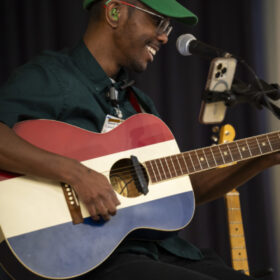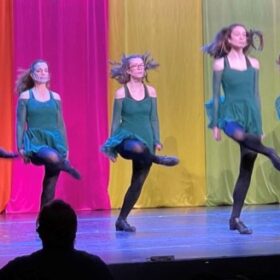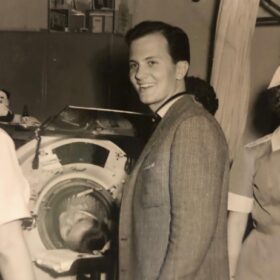VUMC Rheumatologist Jim Gore began writing a symphony 20 years ago. It just had its debut.
The movement "Red Morn on Rolling Hills" was selected for performance by the Tennessee Youth Symphony
July 7, 2023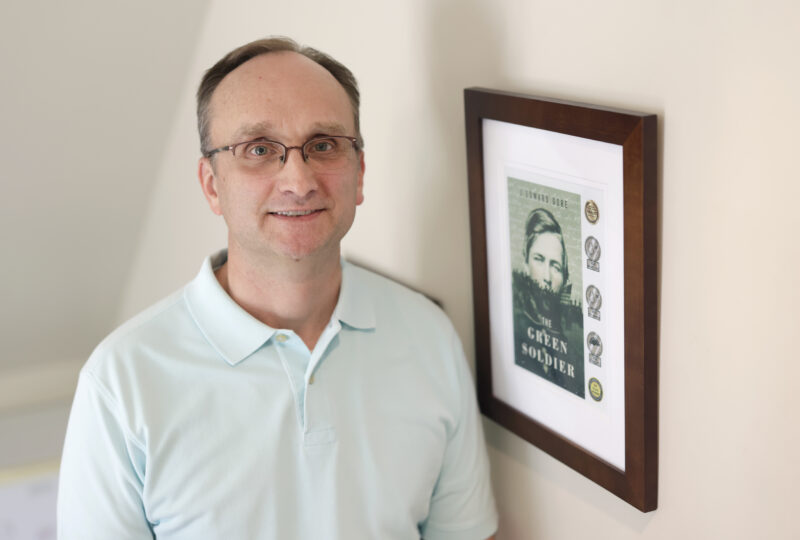
Jim Gore. Photo by Donn Jones
Rheumatologist Jim Gore, MD, sat near the stage at McAfee Concert Hall at Belmont University in May listening to the Tennessee Youth Symphony playing the wistful second movement of the “Kentucky 1862” symphony that pays homage to the rolling hills of Kentucky during the Civil War.
When the talented high school musicians completed the Red Morn on Rolling Hills movement, the audience enthusiastically applauded, the musicians rose to their feet, and the conductor, Anna Maria Miller, turned and gestured to Gore to stand.
“I took piano lessons as a kid, for about six years, but I really didn’t show a lot of aptitude. I liked to play; I just wasn’t very good.”
Twenty years ago, Gore, who has had very little formal musical training, came up with the melody for the symphony. With the help of Blair School of Music Associate Dean for Faculty Affairs Michael Slayton, the music in his head became a reality in 2020.
“I took piano lessons as a kid, for about six years, but I really didn’t show a lot of aptitude. I liked to play; I just wasn’t very good,” said Gore, who practices at Vanderbilt Cool Springs Rheumatology.
But when his two children, now teens, were in elementary school he bought them a digital piano.
“You never know when you’re going to have a Mozart. Well, we didn’t have a Mozart, but we had the digital piano, and I started playing again.”
A few years ago, Gore took online college-level music theory classes, and the instructor had other classes that he posted online – one of which was “write your own symphony, and I thought why not,” he said.
Slowly a melody he had come up with 20 years earlier began to expand in his mind.
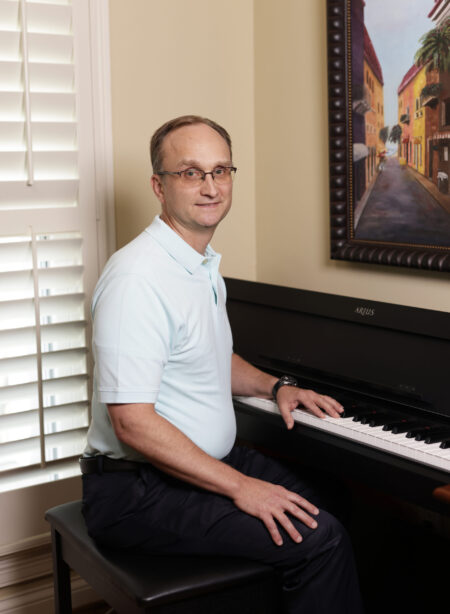
There were no Mozarts at his house, but having a keyboard brought Jim Gore back to music after a long pause. Photo by Donn Jones
“The second movement had kind of softer pastoral sounds that made me think of the rolling hills in central Kentucky. I thought it would sound really nice if a flute started off playing the melody, then the orchestra came in behind it,” he said.
In 2019 he asked a friend who worked at Blair School of Music if she knew anyone who could teach him music composition. “I was thinking maybe a grad student. She said, ‘let me check around,’ and then said Michael Slayton said to email him,” Gore said. “I’m thinking, wow, that’s a pretty big leap to go from online music theory lectures to working with the chairman of music composition at Blair.”
When he talked to Slayton, Gore told him he wanted to write a four-movement symphony in 19th century style. Slayton agreed to work with him in January 2020.
“I thought, ‘I need to be prepared as this was my one chance to do this,” Gore said.
While he was waiting to work with Slayton, Gore found someone who taught music theory online. He also offered one-on-one lessons. Gore worked with him for three one-hour sessions, learning more about the complexities of music composition.
Gore worked with Slayton for 30 minutes every Friday afternoon during the Spring 2020 semester.
“It’s one thing to put notes into music composition software, but it’s another experience to see and hear performers bringing these ideas to life and the crowd enjoying it.”
Slayton listened to what Gore had completed and selected the instruments that should be in the symphony. “Michael told me at the first lesson to try to have 10 seconds orchestrated for the first movement by the next week. I always tried to stay ahead. Michael was very, very patient and kind,” Gore said.
Slayton said he loved working with Gore.
“I normally wouldn’t take something on like that because I’m simply too busy. But when I saw the sheer amount of material Jim already had (in piano format, if I remember correctly), I was intrigued,” he said. “Here is a rheumatologist who has somehow found the time/energy to write almost 30 minutes of music. That spoke volumes on the front end. But truth be told, what made the project successful is Jim’s indefatigable work ethic. He was always on top of things, always prepared. No matter what I asked of him, he would have it done by the next week’s lesson, every time. That work ethic is what helped the piece find its footing quickly, which in turn allowed me space to use our lessons to help with some of the larger elements of composing—beyond the notes—things like orchestration, instrumental balance, developing material, editing, etc.,” Slayton said.
“I’m extremely proud of Jim, and I hope the full piece will be premiered soon. He certainly deserves that.”
When he finished working with Slayton, Gore hired someone to put the symphony into a digital workstation and someone else to mix it. “Red Morn on Rolling Hills” was a Global Music Awards finalist in January 2022.
Soon after his composition received the award, Gore mentioned it to Miller, the conductor of the Tennessee Youth Symphony.
“She said she thought it would be a great opportunity for the kids to play something where they could actually meet the composer,” he said.
Gore’s creativity has extended to other outlets. He’s written a novel, “The Green Soldier,” about a young rural Kentucky soldier – available on Amazon — and a play that was performed at Good Neighbors Theater in Byrdstown, Tennessee.
He isn’t sure what his next creative venture will be, but Gore said seeing something you have written on the page – either musical notes or words in a novel or a play – come to fruition is incredibly fulfilling.
“In the play I wrote one character to have a pocket watch, and you see the play and there’s the watch…and in the symphony, I liked tubular bells. They played that at one part during the second movement at Belmont, and it sounded like church bells in a sleepy small-town. I Ioved that,” Gore said.
“It’s one thing to put notes into music composition software, but it’s another experience to see and hear performers bringing these ideas to life and the crowd enjoying it. It was surreal to hear a piece I put so much work into played by these teenagers who are really amazing musicians. I’m incredibly grateful.”







